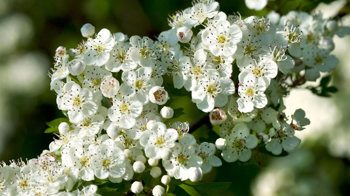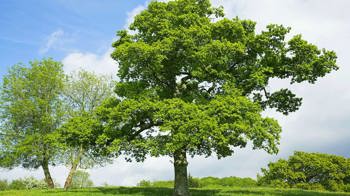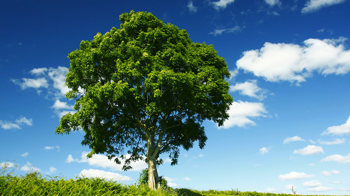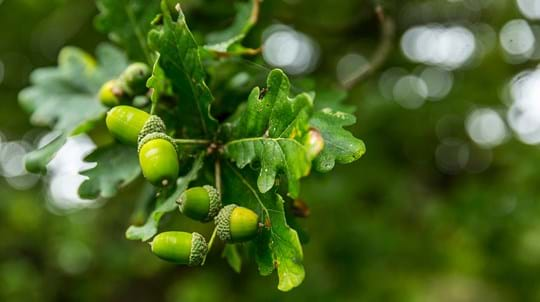
Huntly Wood
Longforgan

Woodland Trust wood
13.62 ha (33.66 acres)
NO313306
Explorer 380
OS Landranger 53
The vibrant mosaic of habitats at Huntly Wood teems with wildlife. On a stroll through the lush woods and grasslands you might spot buzzards soaring overhead, unusual fungi emerging from the undergrowth or even red squirrels scurrying through the treetops. Nestled within the historic site is an ancient monument, Bell Cairn, known locally as Market Knowe.
Features
- Parking at site
- Public access
How to get to Huntly Wood
Huntly Wood is situated in the Carse of Gowrie, approximately 4km (2.5 miles) west of Dundee, and 0.5km (0.3 miles) north of the village of Longforgan.
From the A90 (Perth to Dundee dual carriageway), take the exit for Longforgan. If travelling westwards, take the second Longforgan exit and go under the A90 dual carriageway. At the roundabout, follow signs for Flocklones onto Old Littleton Road. Take the first exit on the right, in front of some houses, and continue for 370m (0.2 miles). The car park and main entrance to Huntly Wood are located on the left.
The nearest train station is Invergowrie, approximately 6km (4 miles) from the wood.
Visit National Rail for more information.
There is no bus stop by Huntly Wood, but bus routes do stop in Longforgan. Please note that walking routes from nearby bus stops include unpaved sections.
Visit Traveline for more information.
Facilities and access
The site is relatively flat. The ground to the north falls away slightly, before rising again to the Braes of Gowrie.
There is an interconnected network of managed paths spanning approximately 2km (1.2 miles) in total, providing several circular routes through a variety of woodland types. Paths are generally in good condition but can be muddy in places.
A car park with capacity for approximately eight cars can be found at the main entrance, to the south of Huntly Wood.
There are no facilities onsite. The nearest public toilets are in Dundee, on the outskirts of Camperdown Park (DD2 4TF), or in more central shopping centres.
Wildlife and habitats
Animals
The diverse habitats of Huntly Wood provide homes for incredibly rare wildlife, including elusive pine martens and scampering red squirrels. Buzzards have also been spotted here - keep an eye out for the acrobatic aerial displays of males in spring.
Plants, trees and fungi
Huntly Wood shelters a variety of tree species, with mature stands of beech and sycamore dominating the centre of the wood. Across the forest floor, look out for ferns, willowherb, cuckooflower, broom, snowdrop and pink purslane.
Habitats
Discover a vibrant patchwork of habitats while exploring Huntly Wood. The wood appears on maps dating back to 1860 and is classified as a long-established woodland of plantation origin.
Admire native broadleaf and mature conifer stands, as well as open grassland and a scheduled ancient monument that adds to the structural diversity of the wood.
History of Huntly Wood
Huntly Wood is steeped in history. Be sure to visit Bell Cairn, the ghostly burial cairn on the southern boundary of the wood, where stone coffins containing skeletons were discovered many years ago. This scheduled ancient monument is a circular, stony heap surrounded by a broad ditch and bank. Though it is easy to miss, the mysterious mound provides a fascinating insight into the history of this site, showing that humans have inhabited the area for at least 3,500 years. It forms part of a network of archaeological sites which date back to the Neolithic era. Local people also know the burial cairn as 'Market Knowe', as village markets were held on the site from the 17th century.
The wood is classified as a long-established woodland of plantation origin and appears on maps from 1860. We acquired the site in 1988 and began thinning non-native conifers and clearing invasive vegetation, creating space for native species to thrive.
Things to do
Walking
The site is popular with dog walkers thanks to a network of paths through the woods. There is a dog waste bin and general bin at the car park.
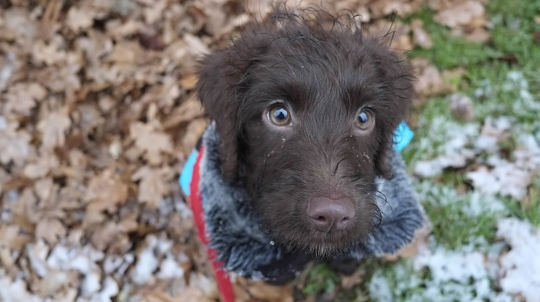
Visiting woods
Walking dogs in our woods
Dogs are welcome for walkies in our woods. Take a look at our tips and guidelines for ensuring we keep our woods safe and special for dogs and wildlife.
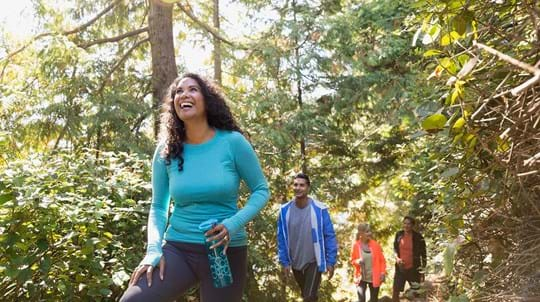
Visiting woods
Walking
Taking a walk in the woods is the easiest way to enjoy the outdoors and get closer to nature.

Visiting woods
Events
Discover events at our woods and the festivals and fairs you can find us at soon.























